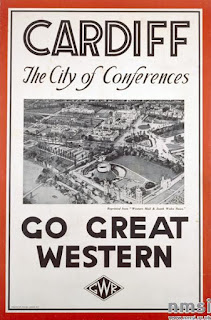The Welsh Government have this week advertised seeking expressions of interest from those who might undertake research on Retail Planning & Town Centre Viability. The stated aim is to study the threats and opportunities facing town centres in Wales, the effectiveness of retail planning policy and advice in protecting them, and where changes or improvements are required to make appropriate recommendations. The stated objectives are:
•To undertake a quantitative analysis of the retail dynamics in Wales.
•To undertake a qualitative analysis of the impact of retail development on town centres in Wales.
•Consider the appropriateness of the current national planning policy in achieving the Welsh Government's aspirations for town centres and make recommendations for improvements to the planning system.
It would appear that the only outcome will be to advise the regional government as to how the stable door might have been locked long after the sellers of horsemeat have bolted.
In seeking to improve planning guidance on retail there might be several ways of avoiding what will probably be considerable expense in commissioning yet another roaming gang of 'regeneration experts' to squirt out yet more verbal diarrhea. They could, for example, refer to the advice in TAN 99 - How To Fuck Up A City. Whilst directed at the larger settlements these provisions are relevant to the health and well being of the Valley Towns.
As regards In- Town Retail, for example, TAN 99 notes that the collective pursuit of abundance is central to the urban experience and retail activity essential to ensure vibrant town and cities. Extensive research has established that people are most comfortable with familiar surroundings and, to this end planning policy has been formulated to ensure that the retail centres of our towns and cities look as much like each other as possible. It recognises that, in many cases little can be done about the architecture and urban space but illuminated signage of familiar brands can achieve a satisfactory level of homogenisation. The traditional shopping street presents challenges, not least those of the Welsh climate and enclosed shopping malls are to be encouraged. This may be achieved through an Exciting Town Centre Regeneration Scheme which can be carried out in partnership with a private sector developer. The Welsh Government no longer has the resources to assist such projects but local planning authorities are encouraged to enter into such arrangements with the private sector as they see fit. The public realm is there to be exploited in these straightened times and local authorties are to be encouraged to bundle it up and flog it off.
The Welsh Government has of course acted on the recommendations of TAN 99 to preserve the vibrancy of our traditional town
and city centres. There are already strict controls on out of town
shopping development. Planning consent for open retail may only be
granted to two more of each of the major foodstore operators on each of the
main distributor roads at the edge of Welsh towns or cities. The only
exceptions to this is development associated with stadium development
(See Sport), regeneration, community enhancement or at the Ministers
discretion. Certain other exemptions may apply where such development is deemed
to be in the public interest, contributions to party political funds being
included in such definition. And of course planning 'gain' - such as a new roundabout or traffic lights.
Town centre shopping is of course largely a leisure
undertaking now but a sub heading of 'retail leisure might deal adequately with the purchase of
other forms of self- gratification. Much exemplary work has been carried out in
this area, particularly in historic commercial centres where banks and places
of business have been converted to Boozeramas. Where such areas are duly
designated a Café Quarter planning consent and necessary licensing for such
establishments should be considered automatic. When buildings of some architectural merit are
not available former shops can be converted into drinking establishments. These
may be unsuitable for a ‘Café’ or Boozerama but provide adequate space for an
Autolout. The distinction is to be considered one of licensing and operation
rather than planning policy. Bouncers are mandatory at all times for Autolouts
and after 6pm for Boozeramas, after 8pm for Café Bars and discretionary for
Cafes. Similar licensing provisions apply to clubs for which consent may also be
treated as automatic within areas designated a Café Quarter. (NOTE: The term
‘Working Mens Club’ is now proscribed over large parts of Wales under the
Property Misdescriptions Act.)
As noted in TAN 99 there is little need for supplementary guidance on
traditional public houses as these are fortunately falling into extinction.The guidance also notes that the pedestrianisation of café quarters is not essential
as civilian traffic into such areas can be managed as necessary by using the
necessary police vans and ambulances as temporary roadblocks.
I have quoted from TAN 99 but, since the publication of such guidance, the National Government has also addressed the issue of town centres. Their approach has perhaps been more innovative in introducing to town planning the proven success of the televised game show. The Welsh Government might adopt a similar approach and have towns compete for funds in an endless televised contest with the obligatory breathless commentary. All regional news and current affairs programmes in Wales are clearly well rehearsed in the appropriate style. Opportunities for spin off series and merchandising could keep the fun factory at Porth Teigr fully occupied and benefit the 'Creative Industries' we have heard so much about. Badly failing towns could, for example, compete in another series with a catchy title such as 'It's A Shithole' the prize being additional policing and other emergency services.
We wait, with breath only slightly bated, for effective action.

